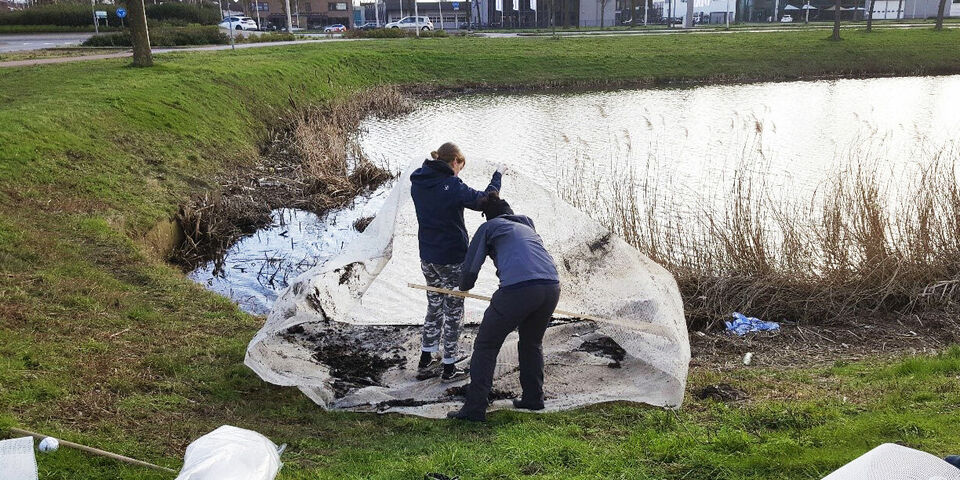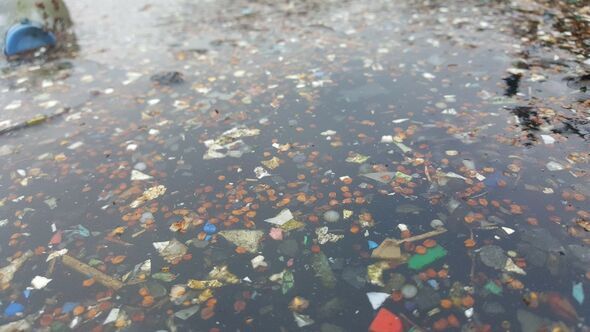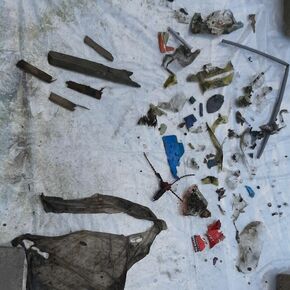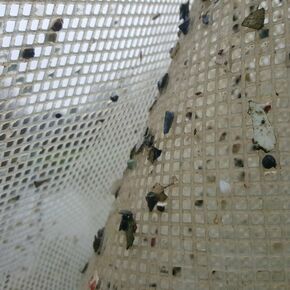Tackling plastic soup thanks to USE course
Water that falls from the sky is regarded as ‘clean’ in the Netherlands and so it is not channeled to a water purification plant by way of the sewer system. In most municipalities this water disappears via rivers and lakes, only to end up unfiltered in the North Sea. But this water is not, in fact, all that clean. Working within a USE learning trajectory, the Storm Plastics team is now researching how plastic waste reaches the ocean via surface water. And how this can be prevented.
The USE course Responsible Innovation for the World received a request from the Plastic Soup Foundation: could students come up with a solution to prevent plastic waste ending up in the oceans. It is estimated that 80 percent of the plastic in the oceans comes from sources on land. Whether the separate sewer systems of the Netherlands play a part in transporting this plastic was the question the non-profit organization wanted answered.
Three TU/e students keen to take on this challenge decided to first discover how much and what kind of plastic waste is being washed out to sea together with our surface water. With this field being so very new, this step seemed necessary. They are calling themselves Storm Plastics.
To measure is to know
“We found out that no good research had yet been done,” says Koen Reerink, student at Industrial Design. “So we started collecting actual waste. Using nets, we set to work with the drainage systems of the municipality of Tilburg. We also found a doctoral candidate at Wageningen University & Research with whom we could work. Now our aim is to publish a paper together on this as yet unknown source of plastic pollution.”
Even while taking one of their initial measurements, Storm Plastics discovered a disturbing quantity of snippets of plastic at one of their research sites. Located next to a waste recycling company, this site had pollution sufficiently severe to prompt the local council and the Plastic Soup Foundation to take immediate action.
A USE course stretches over three quartiles. “From Q2 onward we were collecting and categorizing waste, quite literally. We are focusing our research on macroplastics, pieces measuring more than 5 mm in diameter.” It was pretty hard work, says Reerink, who together with his team has stood on various banks, equipped with material designed and developed by the team. There was even an anxious period in March when the first Dutch corona case was made public in Tilburg. “It was not yet known whether the virus was spread via the sewer system so we decided to call a halt to the research. It later transpired that the spread of corona is indeed measurable in sewage.”
Moving on alone
So, in the spring their fieldwork was unavoidably paused. Nonetheless, the three students were able to complete their USE course. And they decided to resume the project in September. “As well as by personal interest, this was prompted by the significant interest shown by third parties such as Rijkswaterstaat and various companies. It is not a field that has seen much research, and it has social relevance. We are going to complete the paper we plan to publish and we are currently preparing the follow-up research. We are going to restart as soon as corona allows. We hope to supplement our budget - the funding from the municipality of Tilburg is nearly all gone - with prize money we are trying to win by entering a contest run by the Plastic Soup Foundation. This will enable us to extend our research to more areas in the Netherlands.”
Team Storm Plastics is aware that stronger nets are needed. “In the first test phase a number of nets were broken,” says Reerink. “To optimize them, we need an extra team member who has this specific knowledge. We are seeking a person with an interest in and aptitude for calculating forces in water. A Mechanical Engineering student perhaps? We need indestructible nets with a mesh size of 5 millimeters.” There is a simply reason why Storm Plastics is not focusing on microplastics. “We would need to use such fine-meshed nets that they would get clogged even more quickly and the water would not be able to flow through. Then streets would overflow and we wouldn't achieve our objectives.”
Anyone keen to help Storm Plastics with their calculations related to fluid dynamics and the water forces in our sewers can contact them by mail.






Discussion